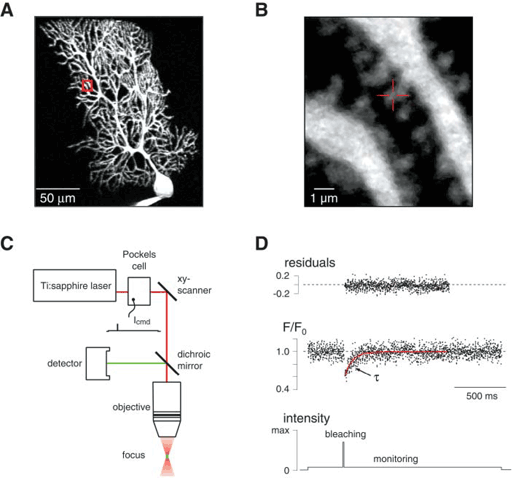Using fluorescence recovery after photobleaching (FRAP) we quantify the mobility of endogenous proteins in the neuronal cytosol. FRAP allows the determination of the specific diffusion coefficients as well as the analysis of protein-protein-interactions in submicrometer large cellular compartments. We aim at identifying low-affinity, fast protein interactions in the vicinity of synapses.

